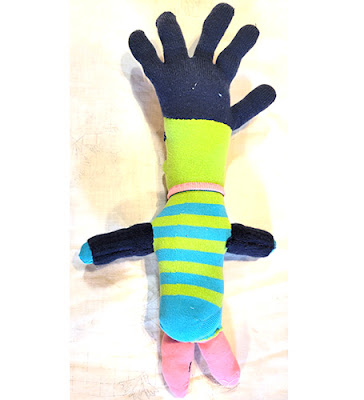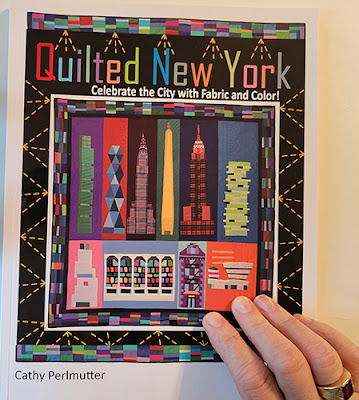Here's my latest commission, and although I live in California, and the client lives in the southeast USA, it was made with help from one of the best Judaica machine embroiderers on the planet, Marilyn Levy of Ontario, Canada. It's a tallit (prayer shawl) for a young man's bar mitzvah.


Like all my commissions, this one started out with a discussion with the young man's family. They wanted cotton, with a leafy design, in blue and grey, so I drew up choices.
They liked #1 best, the simple vines. What was most unusual - and why they needed a custom tallit instead of one off the rack - was that they wanted Ecclesiastes 3:1-8 on the atarah, the long rectangular band that marks the collar.
You know this verse: it begins, "To everything there is a season, a time for every purpose under heaven."
An atarah is optional - store-bought shawls sometimes carry the embroidered prayer for donning it. But I've never seen one with this particular verse.
Initially, the family hoped we could fit in the entire verse, which is a long paragraph. They wanted the letters big enough to read from a distance. I make a sketch to show them what this might look like.

That convinced them that just the first line might be better. They wanted it in Hebrew and English. I told them I could only do this job if I brought in a subcontractor. I contacted my friend Marilyn Levy, a.k.a. "the TALLITmaaven," who graciously agreed to help. So now we had a three-way, international collaboration, with the family telling us what they wanted, Marilyn showing us what's possible in embroidery, and me getting everyone on the same page and doing the construction.
After much back and forth, here's a printout of Marilyn's design; the family was happy with the size and fonts she chose. (The straight lines help with placement; it's not part of the design.) Full size it was about 22" long.
I printed it out onto paper, cut out the lettering area and taped the two pieces together. I used that long paper strip to block out the area of the tallit where it would lie, and started sewing the other elements in place around it, while waiting for Marilyn to finish the fabric version.
Marilyn did a gorgeous, flawless job with the atarah, as I knew she would.

A little closer: 
She also embroidered the boy's name a few times, so I was able to cut those out and place them inside the tallit, inside a kippah (hat), and inside the quilted tallit case I made to hold everything. Here's the front of the case. The secret to quilting those lines so straight....
....was that I used my walking foot to quilt it from the reverse side, a star print, following the lines of the stars in three directions. Below you can see the print under the top flap. Lower down, the silver thread that shows against the blue was in the bobbin. One of the name tags is on the lower left (I blurred the name for this post.)
I also made a pair of kippot with the same blue fabric, with grey binding.
The one on the left is reversible, but the other one, not so much, because of where the name tag went, as you can see below. (I didn't want to set the name lower, fearing it would interfere with the fit.) The hat pattern is from my book, The Uncommon Yarmulke (sold in my etsy shop at https://www.etsy.com/shop/CathyPStudio.) I used the "large, 4-panel" pattern on p. 19, which fits most teens and adults.
On the tallit, I freehand machine stitched veins on the leaves, and 6-pointed stars on the "pinot" (corner squares), with silver metallic thread. The leaves contain Decor Bond, a midweight fusible interfacing, which gave them a bit of depth and stabilized them for embroidery. There's also Decor Bond backing the corner squares, which makes them strong for their duties holding a satin stitched buttonhole to surround the tzitzit, the ritual macrame strands, in place.

Like so many commissions, this one was not without its moment of terror. Marilyn put the package with the atarah and name labels into the mail, and headed off on vacation. After a week, the package vanished from the tracking system. I couldn't find it in the Canadian or the US mail. It didn't turn up on its due date, a Friday. My incoming US mail alerts showed no sign of it.
I lay awake that night, imagining the worst. What if it never showed? What if I had to do the embroidery myself, by hand? I decided to give hand embroidery a shot, just for my peace of mind. I spent the weekend doing the best hand embroidery I could possibly do, using Marilyn's paper printout as my model. Here's the result.
The closer you get, the messier it looks. This: Versus this:
The handmade version is charming and might work for a compassionate blood relative; but it's not a job for a client.
Thankfully, on Monday, Marilyn's atarah appeared, seemingly out of nowhere (according to two country's tracking systems). I was thrilled with it.
The tallit and its accessories reached the family with plenty of time to spare. But you know how you sometimes find yourself buying fabric for the last quilt you finished? That's what sort of happened to me after this project.
In this case, I started looking at embroidery machines, thinking, "Wouldn't it be nice if I could do this?"
And then I answered myself. Machine embroidery is a complicated hobby and/or business. The cost and complexity of an embroidery machine is just the beginning.
Then there's the knowledge, skill, time, and money required for acquiring and understanding lots of software; designing, sizing, adjusting, stabilizing, hooping and rehooping required for large, complicated designs including bilingual Bible verses on atarahs; not to mention mountains of threads you have to buy, and thread changes you must perform. Most of these things are so clearly not my strengths. But partnering with Marilyn who loves all this and does it so well - that was my idea of fun!
I also vowed to learn a little more about hand-embroidery. I enjoyed doing it, even if the results were not suitable for formal occasions. I do wonder if flawless hand-embroidered lettering - especially Hebrew lettering - in a reasonable amount of time is possible. If you've done it, I'd love to see and hear about your approach!



























